Adriacom I Business Services & Immigration
Montenegro Awaits - Let's Make it Yours.
Kotor Cathedral
In the heart of Kotor’s Old Town stands the magnificent 12th-century Kotor Cathedral and, as one of the main landmarks in Montenegro’s most charming coastal town, it’s a must-visit. Nearly impossible to miss, this imposing white twin tower edifice is one of Southeastern Europe’s oldest and tallest Romanesque churches and certainly a magnificent sight for those arriving by sea.
Its most prominent feature is perhaps its two Baroque bell towers which increased the Cathedral’s height to 35 meters when they were added to the structure during reconstruction works in the aftermath of the devastating earthquake of 1667. You might need to look twice to discover that they are not symmetrical. The northern tower is two meters shorter than its southern neighbor because the upper part has never been completed, presumably due to a lack of funds.
Table of Contents
ToggleOver the years, the St. Tryphon Cathedral changed its appearance many times to incorporate then-contemporary architectural styles, and that is why besides Romanesque elements, you’ll also find Gothic, Renaissance, and Baroque details and components in the church’s exterior and interior.
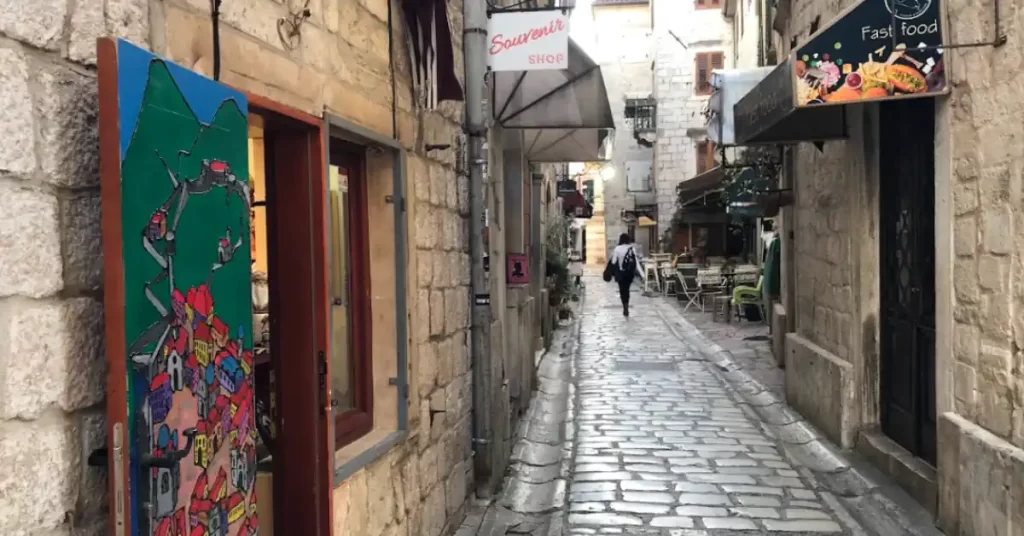
Kotor Old Town
In Kotor’s Old Town, you’ll find medieval squares and fountains, small passages, and a network of narrow cobblestone streets lined with boutiques, cafes. and restaurants.
History and Culture of Kotor Cathedral

The story of St. Tryphon’s Cathedral began in 809 AD when Kotor was still part of the Byzantine Empire, ruled from Constantinople, today’s Istanbul. In that year, Andreaccio Saracenis, one of Kotor’s distinguished residents, went on a mission to the then-capital of the Eastern Roman Empire to acquire Saint Tryphon’s relics and bring them back to his hometown.
Adreaccio was successful in his endeavor and returned to Kotor with the relics of the saint. Shortly after, he started building a modest chapel dedicated to him, Saint Tryphon, the new patron saint of Kotor. Three centuries later, in 1166, a much larger cathedral would be erected on the same grounds where the small chapel once stood.
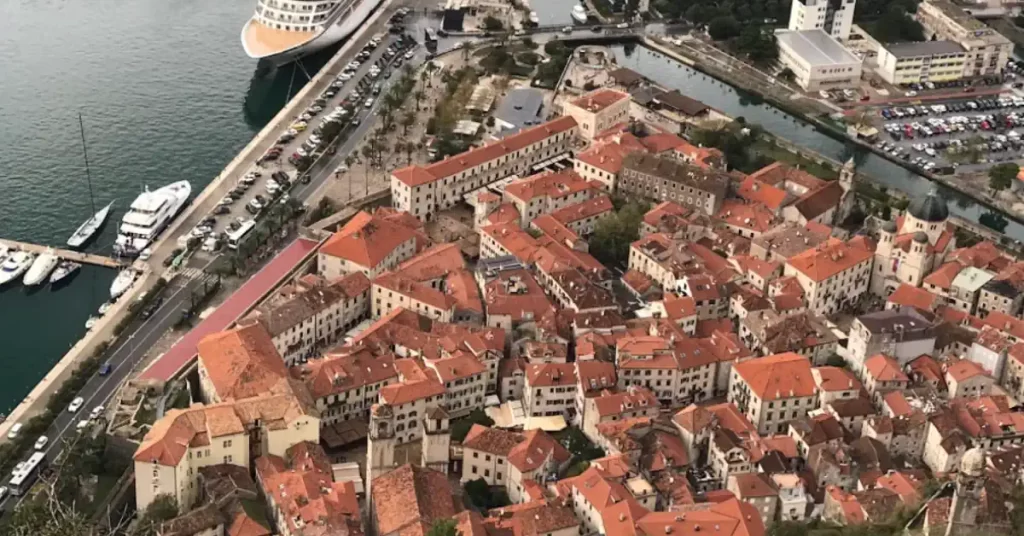
Kotor
Home to centuries-old churches, narrow, winding streets, and Baroque-era stone buildings with flower-draped balconies, Kotor is well worth a visit.
Compared to other buildings in its immediate surroundings, the new St. Tryphon’s Cathedral would stand as highly visible evidence of Andreaccio’s successful mission, to find a safe sanctuary for the saint’s remnants, safely conserved in a handcrafted silver chest, and has remained there until today.
The annual St. Tryphon’s festivities, which extend over a two-week period in January and February, are closely intertwined with the traditions of the Boka Navy, a maritime organization dating back to the start of the 9th century. In the course of the celebrations, serving navy members traditionally kick off the festivities with their performance of the UNESCO-listed kolo circle dance on Cathedral Square on January 27th.
On the eve of St. Tryphon’s Day (February 3rd), officers of the Boka Navy, dressed in beautiful traditional uniforms, are selected for a special assignment. They have to carry the skull and bones, which are revered as relics of Saint Tryphon, in a series of solemn processions through the cobblestone streets of Kotor’s Old Town to the Square of Arms and back to the Cathedral. Thousands of visitors jam the narrow streets as the town celebrates its rich and storied past.
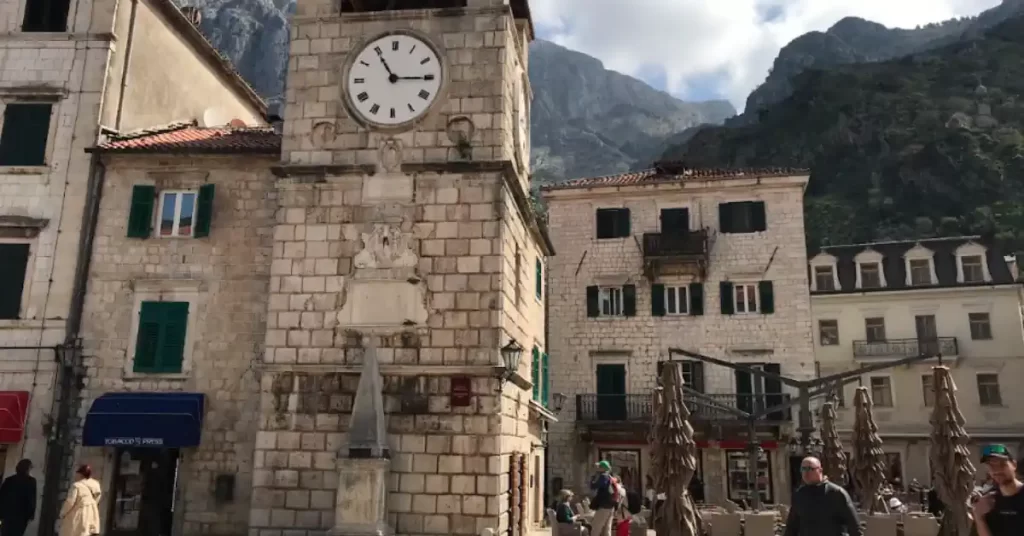
Square of Arms
The clock tower from 1602, the iconic pillar of shame, and an eclectic mixture of shops, restaurants, and cafes is what the Square of Arms in Kotor is composed of.
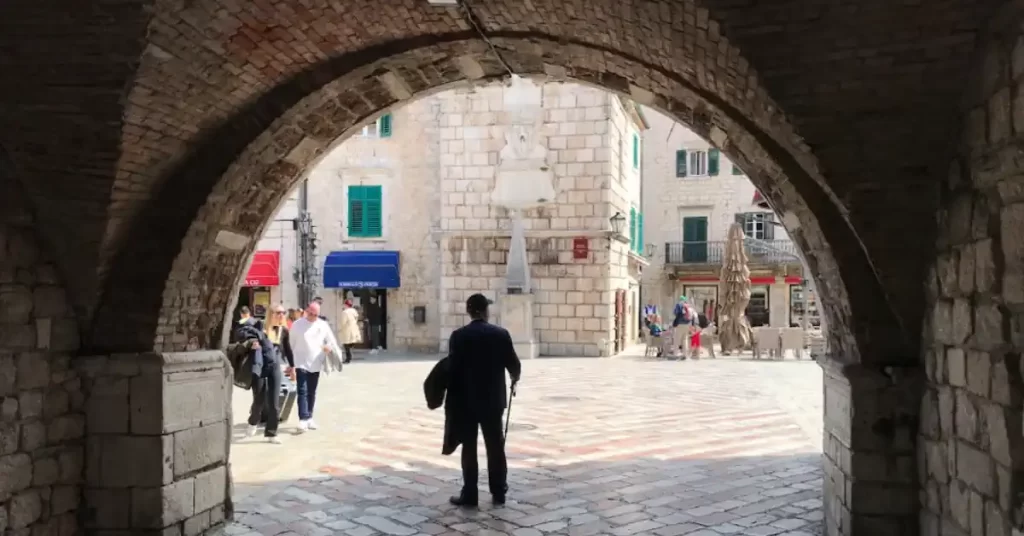
Events in Kotor
Find out about the major events in Kotor, celebrated throughout the year, from the biannual carnival parades to St. Tryphon’s Day.
The Interior
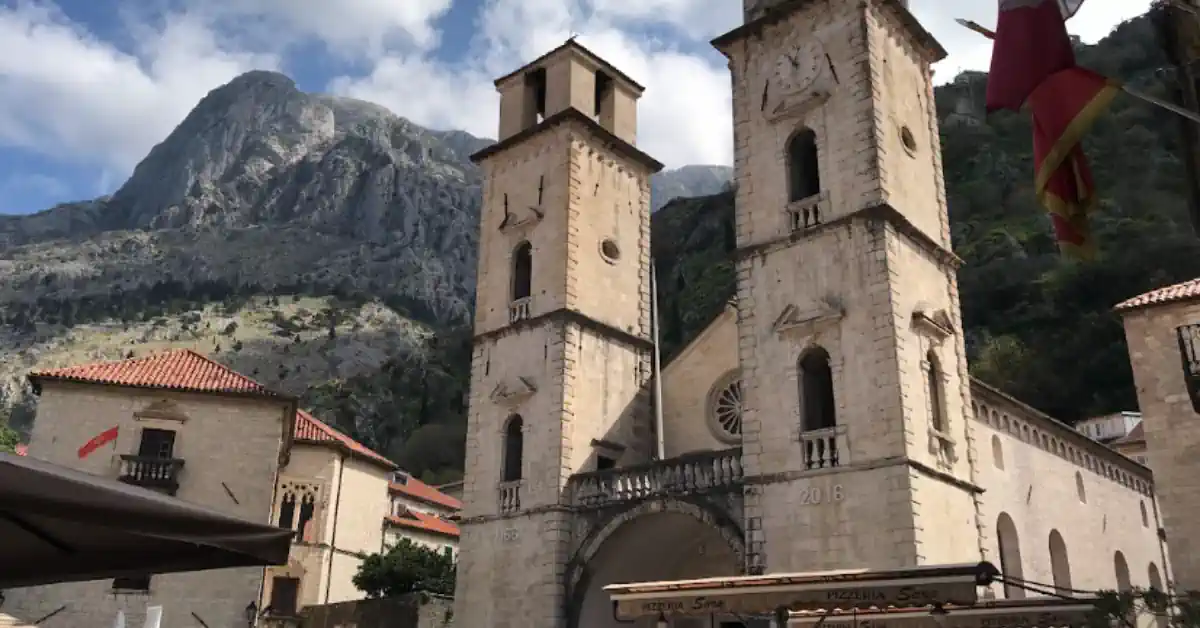
Inside the church, the naves are laid out by a series of brick and Corinthian pillars with capitals, while the floor decorations boast an inlaid marble mosaic. Throughout the centuries, the Saint Tryphon Cathedral underwent several changes at the hands of many renowned local and international artists. Unfortunately, only a few vibrant 14th-century frescoes that used to adorn almost the entire church’s interior, have been preserved.
One of the most dramatic additions was the new ciborium, dating back to the second half of the 14th century. It was most likely contributed by one of Vitus of Kotor’s pupils. This beautiful work of art, which is decorated with pre-Romanesque interlace compositions, contemplated another, smaller ciborium from the 9th century.
An 18th-century addition was the four marble altars crafted by Venetian artists. The relief depicting the Blessed Virgin Mary with Christ among saints is an excellent example of Montenegrin Baroque art. Another highlight is the silver altarpiece which was contributed in the mid-15th century by various artists from Kotor, Venice, and Switzerland.
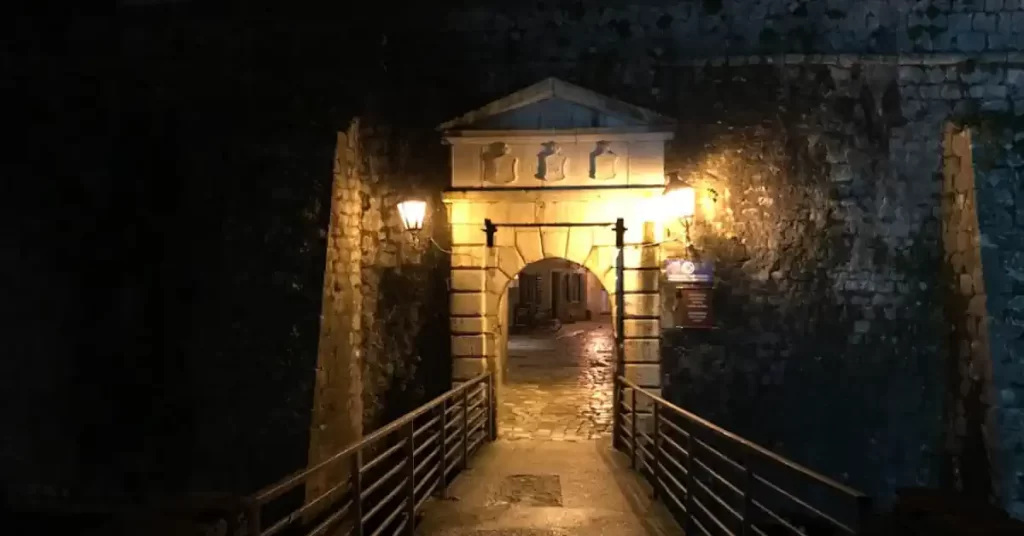
Things to do in Kotor
Rich in culture, history, and culinary tradition, there are many things to do in Kotor and around. Read this guide to find out more about the best activities.
It depicts twenty biblical characters, including John the Baptist, John the Evangelist, Paul the Apostle, and Bartholomew the Apostle, and is widely considered to be one of Kotor’s most notable pieces of sacral artwork. The two figures of Saint Peter and Christ were forged by John of Basel in 1440 while the sculptured reliefs of Saint Jerome and St. Francis were added by the Venetian master goldsmith Venturin in the 17th century.
The altarpiece which is placed behind a red-marbled ciborium also features an image of Saint Tryphon, dating back to 1378, as the central figure beside Christ. He holds a miniature of Kotor, complete with the city walls and Kotor Fortress, in his right hand, and a palm frond in his left hand, symbolizing martyrdom. The intricate architrave depicts various scenes from his life. Back in the day, the ciborium would include curtains that would be drawn closed during important church rituals and liturgical services.
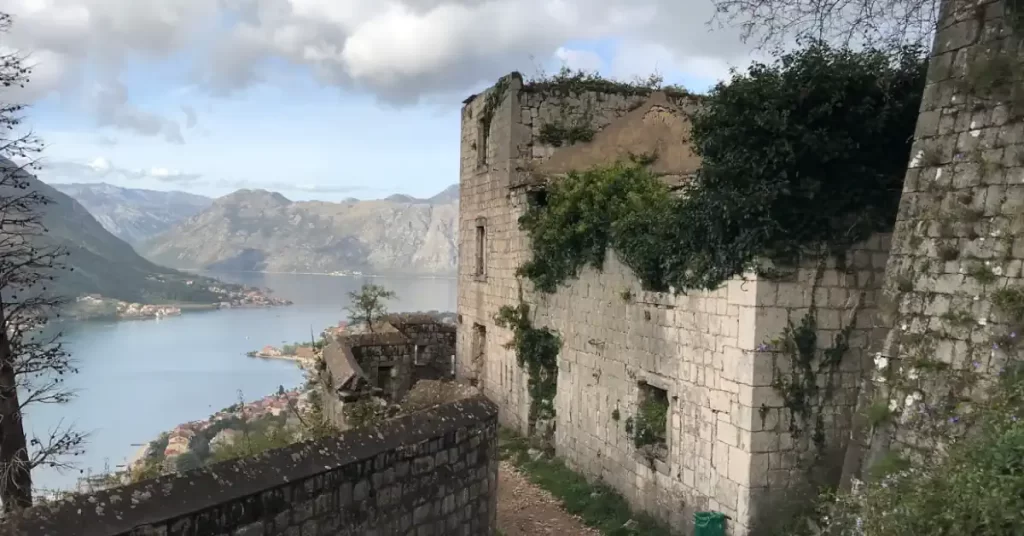
Kotor Fortress
Part of the UNESCO-protected Venetian Works of Defense, Kotor Fortress is one of the top sights of Kotor. Views from atop are breathtaking.
The Cathedral’s Relic Chapel is a Baroque work by Italian sculptor Francesco Penso Cabianca. It is a circular red room with a star ceiling and includes some of Penso’s most beautiful sculptures and reliefs. Relics of special note that are preserved here are the Glorious Head of Saint Tryphon, safeguarded in an exquisite reliquary, using some of the finest materials available and crafted by various artists between the 13th – 17th centuries.
There is also the Reliquary Casket of Saint Tryphon which dates from the mid-16th century and conserves several bones of the patron saint. The reliquary is decorated with silver relief plates depicting scenes of the life of St. Tryphon. One relief shows how he is violently quartered by horses while another one portrays him being whipped. A third relief paints a picture of Saint Tryphon being tortured by fire and stoned to death.
The assembly of the silver casket coincides with a very tumultuous period in Kotor’s history: the advances of the Ottoman Navy into the Bay of Kotor that culminated in the Siege of Castelnuovo and the Battle of Perast. In the aftermath of these events that took place in 1539, large swaths of coastal Montenegro were occupied by the Ottomans, including Herceg Novi and Risan.
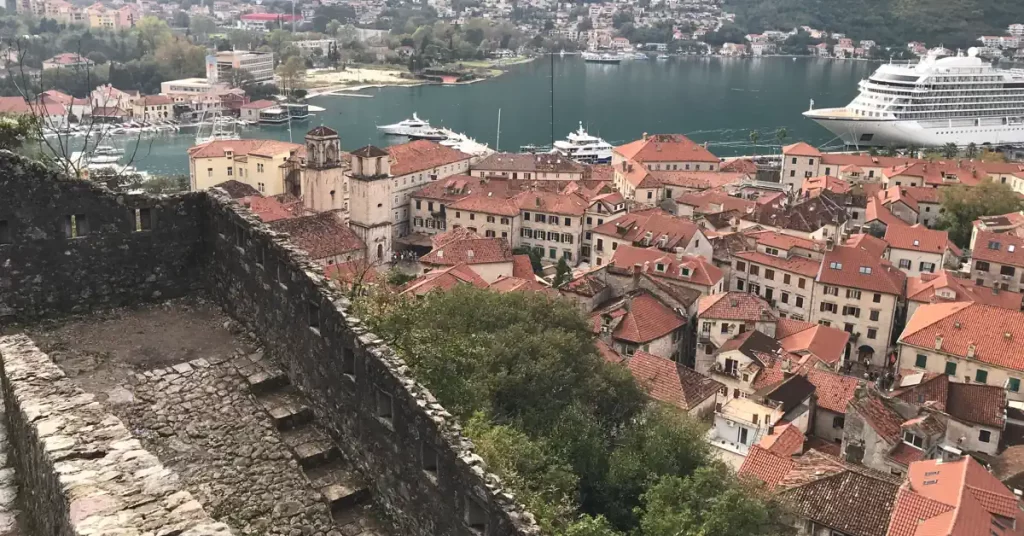
Kotor’s Turbulent History
Find out more about Kotor’s History, from its founding in 168 BC by the Romans and its ascent as a notable maritime power under the Venetians to more recent events.

The Bay of Kotor
For centuries, the Bay of Kotor has played an important role in Europe’s maritime trade and shipbuilding. Its charming coastal towns are a testament to its glorious past.
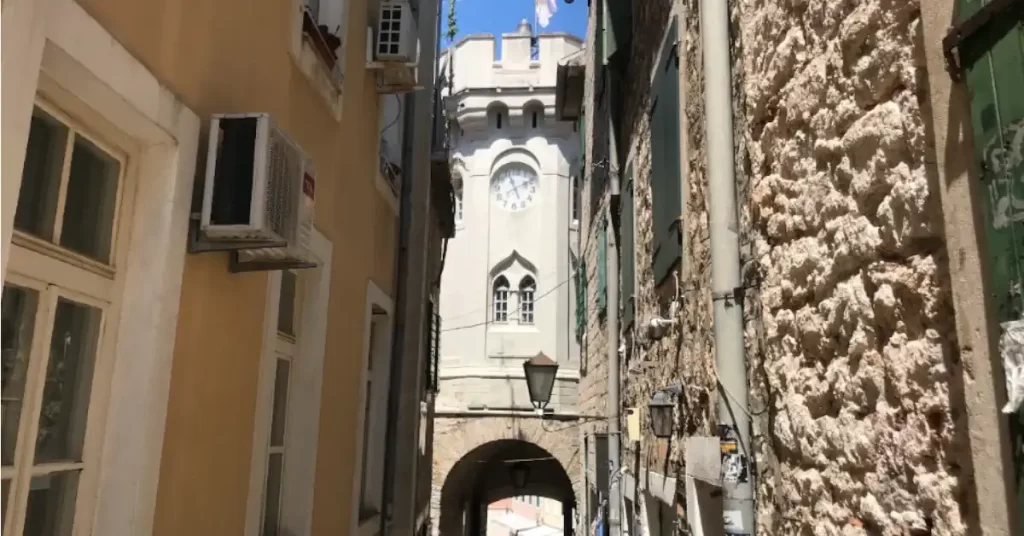
Herceg Novi
Herceg Novi straddles the border with Croatia. Its beautiful coastal promenade and well-preserved old town make it a popular resort and one of the best places to live.
Kotor was able to stop the invaders at its city gates and remained under Venice’s control until the Republic’s collapse in 1797. The reliquary figures torturing Saint Tryphon are depicted as bearded and turbaned Ottomans, with sabers hanging from their belts. One relief shows a soldier in Turkish military dress decapitating Saint Tryphon and presenting the severed head to Aquilinius.
In addition to the Glorious Head and the Reliquary Casket of Saint Tryphon, the chapel treasures an amazing collection of other relics, well-preserved in limb-shaped silver, wood, or glass containers. One reliquary contains stones that were presumably thrown at Jesus while another one guards parts of a wooden cross which is claimed to be the one on which Jesus was crucified.
Besides many unique artifacts, vestments, metal works, and paintings, there is also the original marble sarcophagus in which Saint Tryphon’s relics were transported to Kotor in the 9th century. The chapel is enclosed with a large red wrought iron gate which is adorned with a silver antependium from the 17th century by Venetian artist Venturin. There is a small entrance charge.